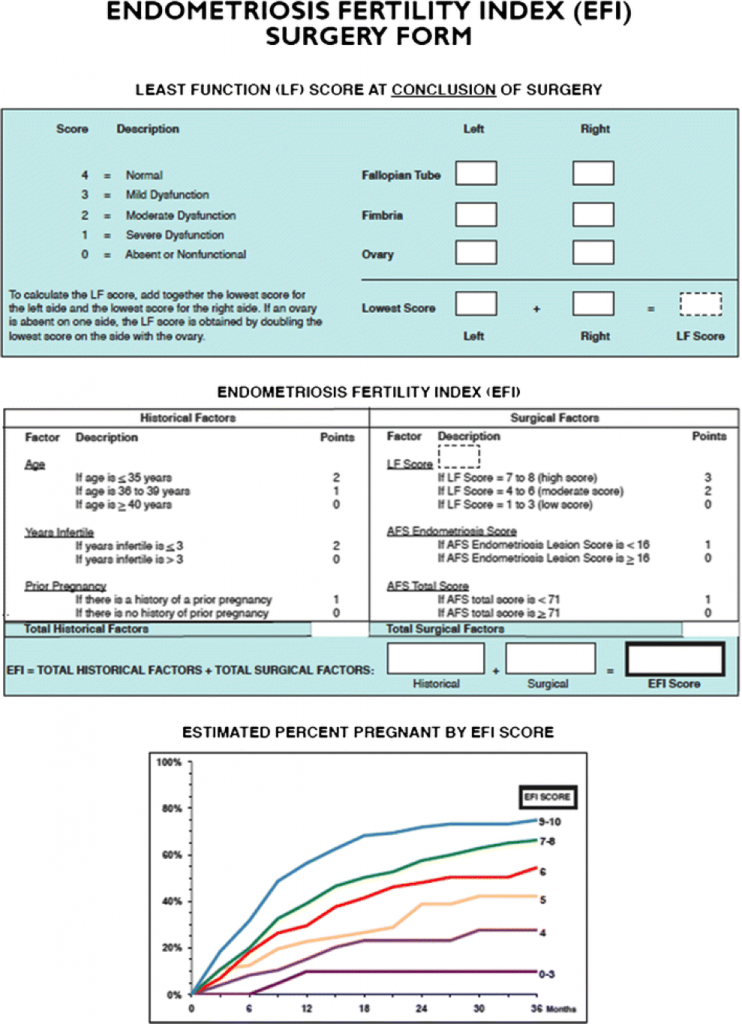Classification of Endometriosis
Endometriosis is known to have typical and atypical presentations and may be present superficially over the peritoneum or infiltrate deep into the abdomino-pelvic organs leading to a complete distortion of the anatomy
The need to correctly classify endometriosis is paramount.The ideal classification system for endometriosis does not exist, let’s call it a work in progress.
Classification should help physicians
- map the disease,
- create a surgical plan
- anticipate length of surgery, involvement of other disciplines
- possible complications,
- fertility outcomes
- refer advanced disease to specialized centres
- Counseling patients regarding the above
The widely used classification system is the one proposed by the American Fertility Society, later revised and given a facet – revised American Society for Reproductive Medicine (r-ASRM) classification of endometriosis. The r-ASRM score is supplemented by the ENZIAN classification of endometriosis score when retroperitoneal organs in the case of deep infiltrating endometriosis (DIE) are affected. However, since the classification systems are majorly based on the anatomy and size of the lesions and do not take into account the symptoms, the World Endometriosis Society (WES) established to use r-ASRM classification, Enzian classification (in case of deep infiltrating endo) and EFI classification (in case future fertility is concerned) to better approach and treat the condition until a new updated classification systems that take patient symptoms into consideration is established.
r-ASRM classification:
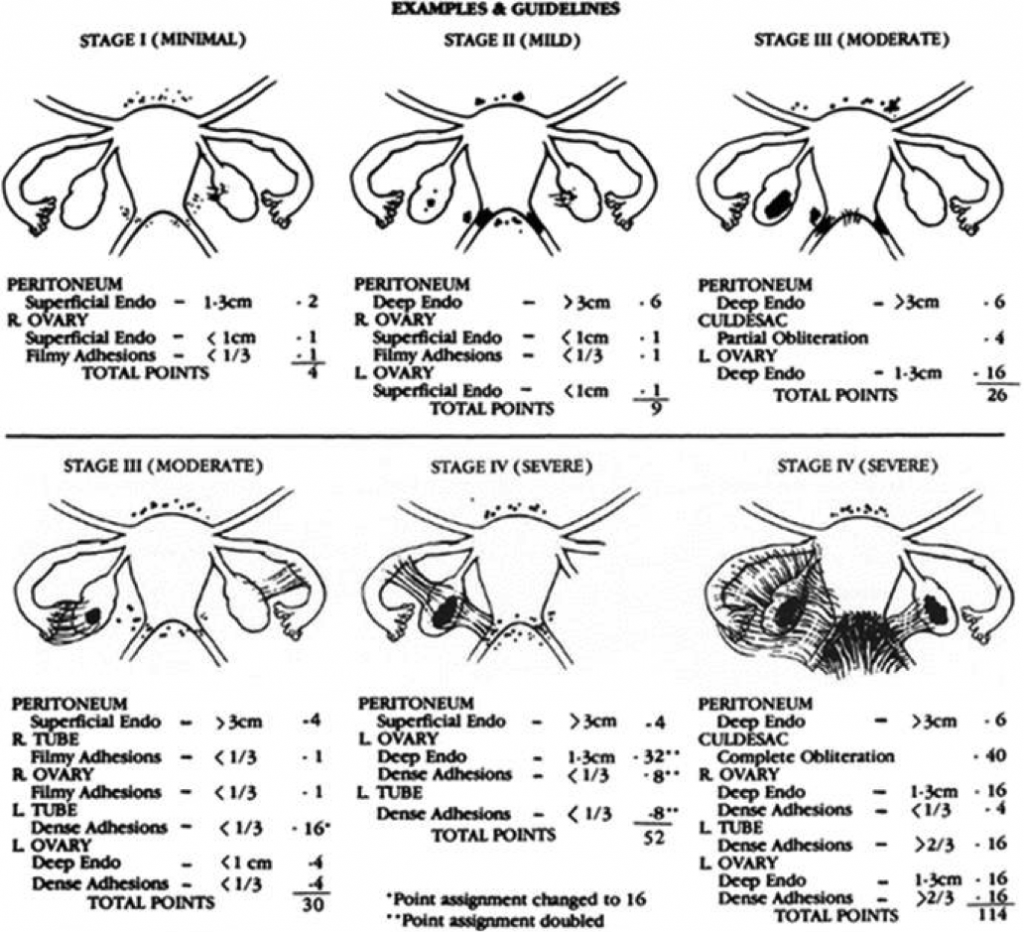
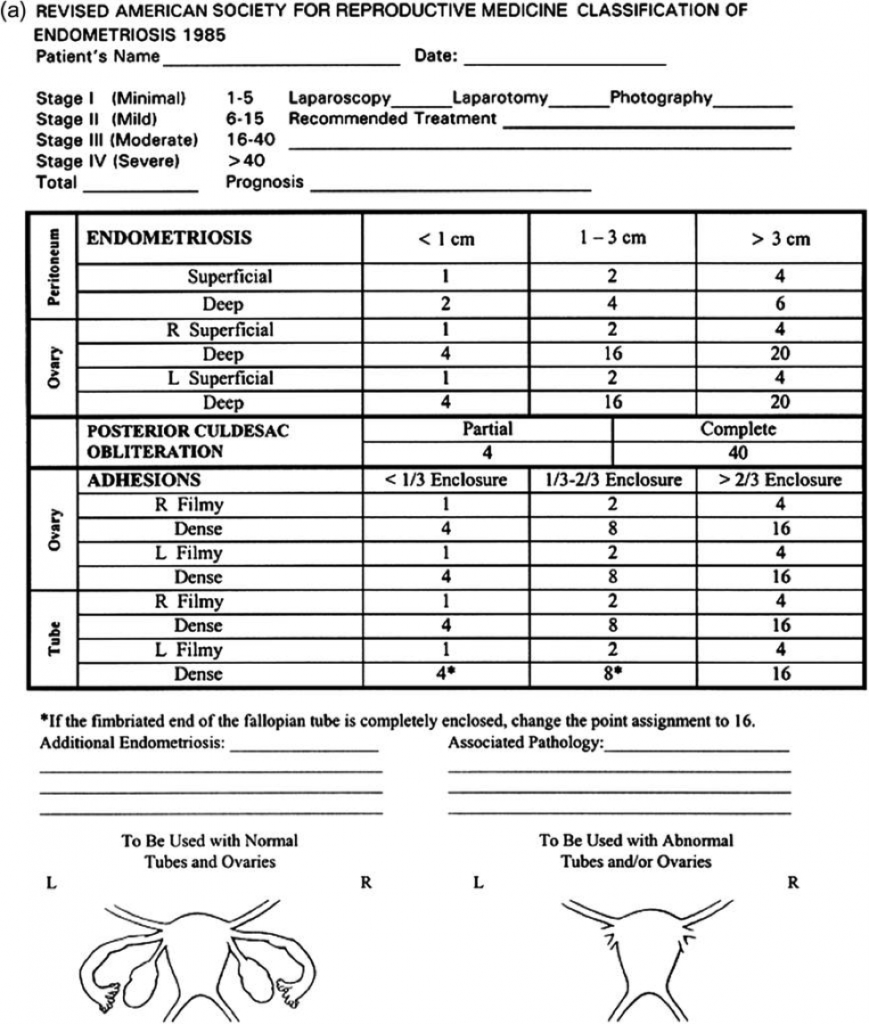
Basically, the classification/staging is based on scores assigned to implants and adhesions depending mainly on the size of lesions.
Stage 1 (minimal):
Score: 1-5 with superficial peritoneal and ovarian implants and filmy adhesions in one or both ovaries.
Stage 2 (mild):
Score: 6-15 with a few superficial and a few deep implants in the peritoneum and ovaries, filmy adhesions and small chocolate cysts in the ovaries.
Stage 3 (moderate):
Score: 16-40 with deep implants in the peritoneum, cysts in the ovaries, dense adhesions in the fallopian tubes and/or partial posterior cul-de-sac obliteration.
Stage 4 (severe):
Score: >40 with many deep implants in the peritoneum, large chocolate cysts, many dense adhesions and complete cul-de-sac obliteration.
Apart from the above, presence of endometriosis in other places like bowel, urinary tract, vagina and cervix are noted in ‘Additional Endometriosis’ column and conditions like tubal occlusion, leiomyomata and uterine anomalies like bicornuate uterus, uterus didelphys etc., are noted in ‘Other Pathology’ column to help assist doctors in treatment plan.
Limitations:
Though the r-ASRM classification system of endometriosis explains the condition in the peritoneum and ovaries, it fails to explain the involvement of retroperitoneal organs in case of deep infiltrating endometriosis (DIE). So to supplement the r-ASRM classification in the case of DIE with retroperitoneal involvement, ENZIAN system of classification was developed.
ENZIAN classification:
Score represented as, A0-3 B0-3 C0-3 FA, FB, FU, FO.
This system compartmentalizes retroperitoneal structures into:
- Rectovaginal septum and vagina.
- Sacrouterine ligament to pelvic wall.
- Rectum and sigmoid colon.
and assigns scores from 0-3 analogous to TNM staging of malignant tumors based on size of lesions and in each compartment the lesion with the largest size is considered for scoring.
Lesions on other sites are noted as suffix to prefix F with F for foreign and suffixes being:
A for adenomyosis.
B for bladder.
U for ureter intrinsic involvement.
O for other(s).
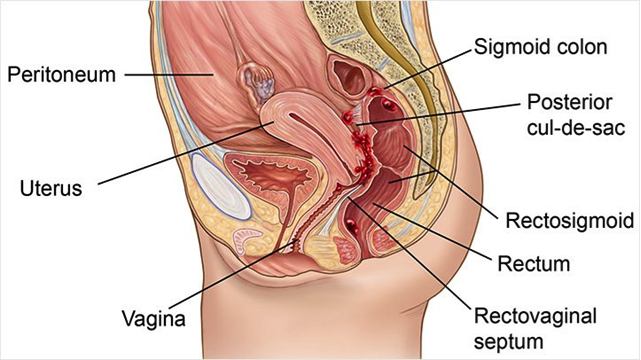
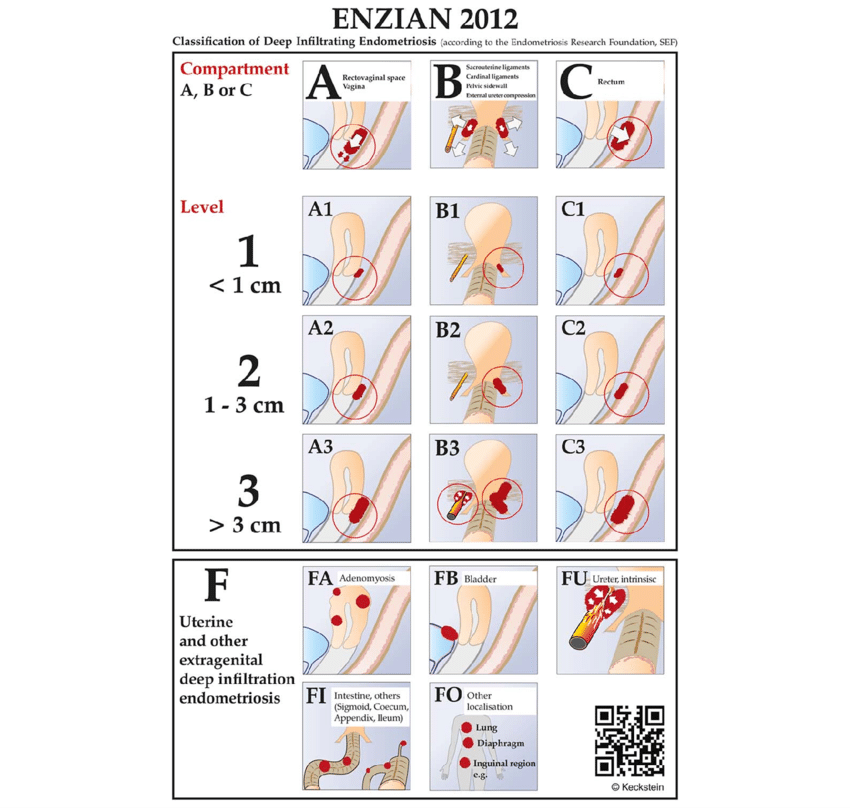
What about symptoms based classification?
Though both r-ASRM and ENZIAN system of classification explain the pathological entity of endometriosis, the manifestation of the disease – cyclic and non-cyclic pelvic pain, dyspareunia and subfertility – is often overlooked. Most of the times, the stage of endo and the severity of symptoms and algogenic mechanisms don’t go hand in hand as intensity of pain is dependent on adhesions and not size of lesions. Though subfertility issue associated with endo is addressed by the Endometriosis Fertility Index (EFI), pelvic pain and dyspareunia are still to be explained clearly. For example, a woman with stage 4 endo could experience less pain as compared to someone with stage 1 endo. Empirically, size of lesions do not go with severity and intensity of algogenic manifestations and since dyspareunia is not oft spoken, it can be a diagnostic factor for endo only when retrocervical area and pouch of Douglas (POD) are involved, causing intense pain. So, though there is no proper classification system based on symptoms, to improve the quality of life of women who live with endo, there are many treatment options upgraded to best fit their requirements.
